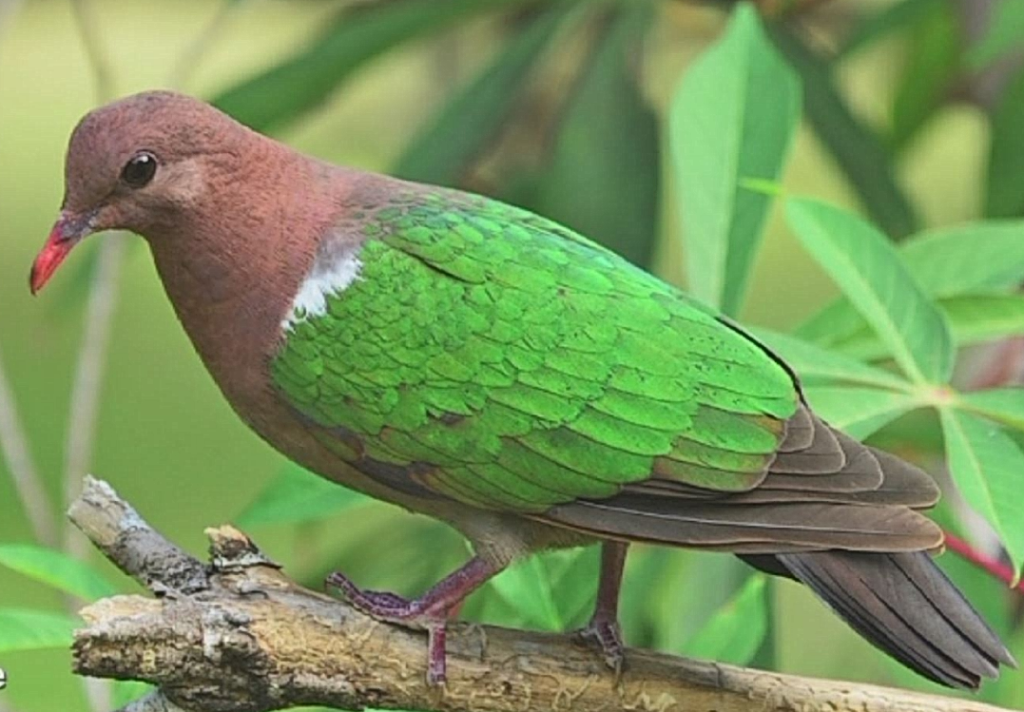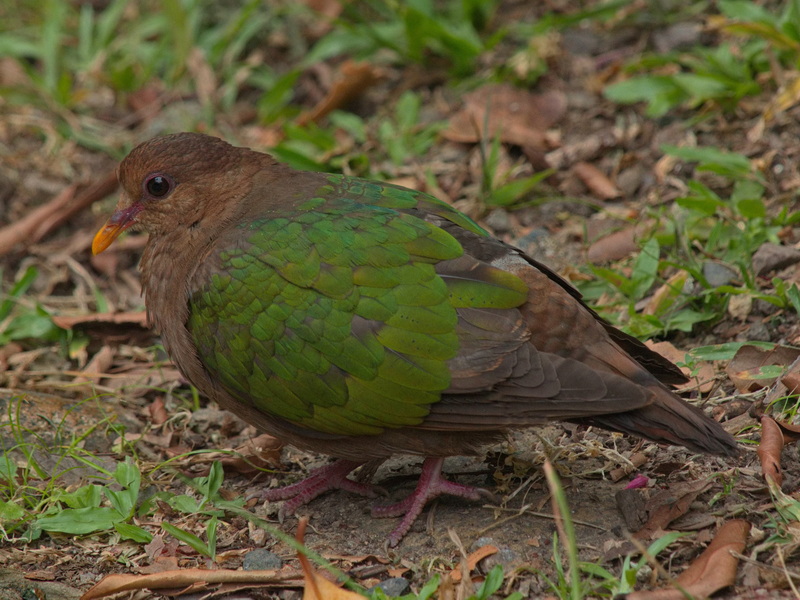One of my favourite common birds along the village tracks and gardens is the Brown-capped Emerald Dove (Chalcophaps longirostris), often simply referred to as the Emerald Dove. It is most conspicuous when taking flight from the ground to stay ahead of walkers on a track or cars on the range road, when the flash of its leaf-green holders catches your attention. It spends most of its time on the ground searching for seeds fruit and insects. It is not too perturbed by humans and often prefers to simply walk away. I have one or two doves in my garden that regularly lead the way as I stroll up my drive-way.

Emerald doves are usually monogamous and form long-term pair bonds. The male has a distinct white shoulder patch and a small grey patch on the crown that are mostly lacking in the females. They breed at the end of the wet season and build a simple stick nest 5m up in the trees.

The Brown-capped Emerald Dove was originally considered to be the same species as the Common Emerald Dove (Chalcophaps indica), which is found in SE Asia (with a rare subspecies on Christmas Island). Some bird field guides still refer to our species as C. indica.
Text by Jamie Oliver
